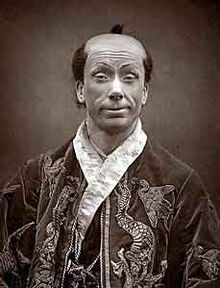 Liza with a “Z”: A Concert for Television, an hour-long TV concert by Liza Minnelli, produced by Bob Fosse and Fred Ebb, staged by Fosse, and conducted by Marvin Hamlisch. The concert, filmed at New York’s Lyceum Theatre, was originally telecast on NBC in 1972:
Liza with a “Z”: A Concert for Television, an hour-long TV concert by Liza Minnelli, produced by Bob Fosse and Fred Ebb, staged by Fosse, and conducted by Marvin Hamlisch. The concert, filmed at New York’s Lyceum Theatre, was originally telecast on NBC in 1972:
(This is the latest in a series of arts-related videos that appear in this space each Monday and Wednesday.)


 Now People’s Light & Theatre Company, one of my favorite East Coast drama troupes, has taken on “Biloxi Blues,” the second panel of the triptych of autobiographical plays (the others are “Brighton Beach Memoirs” and “Broadway Bound”) in which Mr. Simon sought to puzzle out the meaning of his journey from Depression-era scuffling to world-wide celebrity. The original production opened on Broadway in 1985 and ran for 524 performances, but professional stagings have since been increasingly hard to find. This one, directed by Samantha Bellomo, makes a strong case for a play that, despite certain flaws, is both consistently amusing and, like “Lost in Yonkers,” full of unexpected stretches of harsh darkness.
Now People’s Light & Theatre Company, one of my favorite East Coast drama troupes, has taken on “Biloxi Blues,” the second panel of the triptych of autobiographical plays (the others are “Brighton Beach Memoirs” and “Broadway Bound”) in which Mr. Simon sought to puzzle out the meaning of his journey from Depression-era scuffling to world-wide celebrity. The original production opened on Broadway in 1985 and ran for 524 performances, but professional stagings have since been increasingly hard to find. This one, directed by Samantha Bellomo, makes a strong case for a play that, despite certain flaws, is both consistently amusing and, like “Lost in Yonkers,” full of unexpected stretches of harsh darkness. Life’s hardest lessons are often learned most easily when taught with a smile. Crash Davis, the over-the-hill catcher in “Bull Durham,” taught his girlfriend, a believer in reincarnation, a priceless lesson in the vanity of human wishes by asking her this teasing question: “How come in former lifetimes, everybody is someone famous?” George Grossmith, the author of “The Diary of a Nobody,” put his finger on a similarly hard truth—most of us, no matter how well we may think of ourselves, are unimportant to the rest of the world—with equally diverting results.
Life’s hardest lessons are often learned most easily when taught with a smile. Crash Davis, the over-the-hill catcher in “Bull Durham,” taught his girlfriend, a believer in reincarnation, a priceless lesson in the vanity of human wishes by asking her this teasing question: “How come in former lifetimes, everybody is someone famous?” George Grossmith, the author of “The Diary of a Nobody,” put his finger on a similarly hard truth—most of us, no matter how well we may think of ourselves, are unimportant to the rest of the world—with equally diverting results. Grossmith, by the way, was better known in his own time not as a writer but as the D’Oyly Carte Opera Company’s patter-song specialist, in which capacity he created the role of Ko-Ko in Gilbert and Sullivan’s “The Mikado.” He is explicitly portrayed as a morphine addict in “Topsy-Turvy,” Mike Leigh’s 1999 film about the making of “The Mikado,” and the portrayal is based on 19th-century backstage gossip that appears to have been accurate. Because he died in 1912 without making any recordings, we can “know” him only from “Topsy-Turvy” and, far more important, from “The Diary of a Nobody.” It’s a minor masterpiece of satirical comedy, and like many other such masterpieces—as well as, one suspects, its drug-dependent author—it is also very, very sad….
Grossmith, by the way, was better known in his own time not as a writer but as the D’Oyly Carte Opera Company’s patter-song specialist, in which capacity he created the role of Ko-Ko in Gilbert and Sullivan’s “The Mikado.” He is explicitly portrayed as a morphine addict in “Topsy-Turvy,” Mike Leigh’s 1999 film about the making of “The Mikado,” and the portrayal is based on 19th-century backstage gossip that appears to have been accurate. Because he died in 1912 without making any recordings, we can “know” him only from “Topsy-Turvy” and, far more important, from “The Diary of a Nobody.” It’s a minor masterpiece of satirical comedy, and like many other such masterpieces—as well as, one suspects, its drug-dependent author—it is also very, very sad….